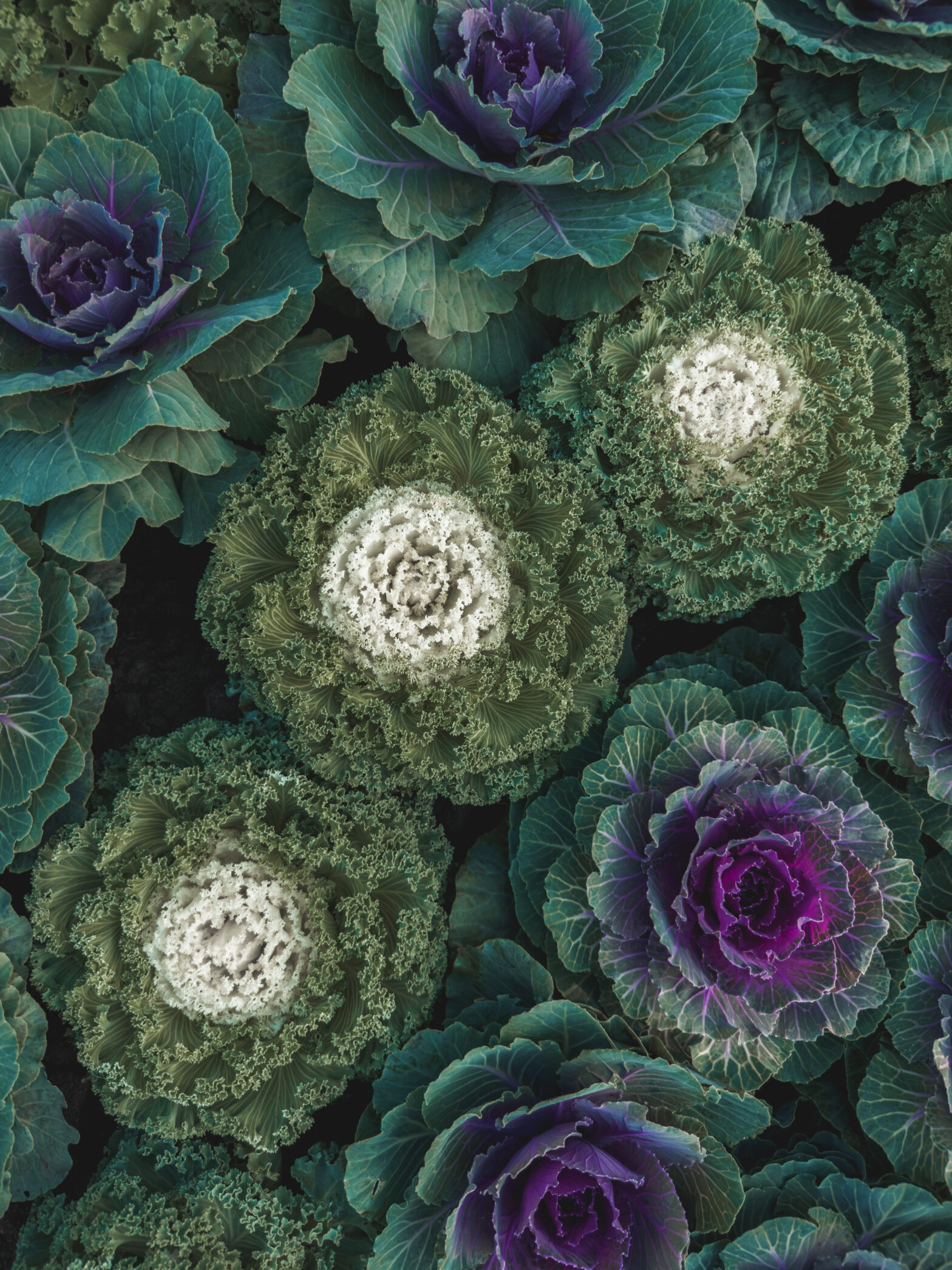In the article “VARY YOUR VEGGIES: How to Prepare Vegetables,” readers are encouraged to try new cooking methods and embrace a variety of colors when it comes to vegetables. By varying the cooking techniques such as microwave, steam, stir-fry, pan, bake, and broil, individuals can add exciting and diverse flavors to their menus while retaining vital nutrients. The author, Julie Garden-Robinson, Ph.D., R.D., L.R.D., provides helpful tips for each cooking method, emphasizing the importance of not overcooking and preserving the vibrant colors and crisp textures of the vegetables. By following these guidelines, individuals can reap the full benefits of vegetables and enhance their overall health and well-being.

Methods of Cooking Vegetables
Cooking vegetables is an essential part of meal preparation, as it helps to enhance their flavor, texture, and nutritional value. There are several methods of cooking vegetables, each offering a unique way of bringing out their natural goodness. In this article, we will explore some popular methods of cooking vegetables and discuss their advantages and disadvantages.
Microwave
Microwaving is a quick and convenient method of cooking vegetables. It cooks food faster than most other methods and requires little to no water. This is advantageous because water-soluble vitamins such as vitamin C and B vitamins can leach out into the cooking water. By using minimal water, microwaving helps to retain the vitamins and colors of vegetables.
To microwave vegetables, simply place them in a microwave-safe dish with a small amount of water, cover the dish with a microwave-safe lid or plastic wrap, and cook according to the manufacturer’s directions. Keep in mind that cooking times may vary depending on the type and quantity of vegetables being cooked.
Steam
Steaming is a healthy and flavorful method of cooking vegetables. It involves using steam to cook the vegetables, which helps to preserve their color, texture, and nutrients. Steaming is particularly suitable for fresh or frozen vegetables such as asparagus, broccoli, carrots, spinach, and summer squash.
To steam vegetables, you can use a vegetable steamer or colander placed over a pot of boiling water. Make sure the vegetables are elevated above the water, so they cook in the steam and not in the water itself. Cover the pot and cook until the vegetables are just tender-crisp. This helps to retain their vibrant color and essential nutrients.
Stir-fry
Stir-frying is a popular cooking method that involves quickly cooking small pieces of vegetables in a hot skillet or wok. This method helps to retain the crispness, texture, and bright color of the vegetables while imparting a delicious flavor. It is an excellent way to cook vegetables that need to be cooked quickly, such as bell peppers, broccoli florets, carrots, and snap peas.
To stir-fry vegetables, heat a wok or heavy skillet over high heat, add a small amount of oil or a low-sodium broth, and then add the vegetables. Stir constantly while cooking to ensure even cooking and prevent burning. Cook until the vegetables are bright, glossy, and tender-crisp, typically for a few minutes. Avoid overcooking, as this can result in mushy vegetables with diminished nutritional value.
Pan
Panning is a simple and quick method of cooking vegetables with very little water or using the steam formed by the vegetables’ own juices. This method helps to retain the nutrients, flavors, and texture of the vegetables. It is suitable for vegetables like shredded cabbage, carrots, sliced summer squash, thinly sliced green beans, and most leafy greens.
To pan-cook vegetables, shred or cut them into small pieces and place them in a heavy pan with a small amount of cooking oil, just enough to lightly coat the bottom of the pan. Use a tight-fitting lid to hold in the steam. Cook the vegetables for approximately five to eight minutes or until they are tender-crisp. This method helps to preserve the vibrant color and nutritional value of the vegetables.
Bake
Baking vegetables in the oven is a gentle and slow method of cooking that helps to retain their vitamins, minerals, and flavors. It is ideal for potatoes, sweet potatoes, winter squash, and onions. Baking vegetables at a moderate temperature allows their flavors to concentrate while preserving their texture and nutrient content.
To bake vegetables, wash them thoroughly, prick the skins with a fork to allow steam to escape, and place them on a baking sheet. Bake in a preheated oven at the recommended temperature until they are tender and golden brown. This method is versatile and can be used to cook a wide variety of vegetables.
Boil
Boiling is a common method of cooking vegetables in a minimum amount of hot liquid, usually water. It is a quick and easy way to cook vegetables, but it can result in the loss of some water-soluble vitamins. To minimize nutrient loss, use a minimal amount of water and cook the vegetables for a short amount of time.
To boil vegetables, bring a pot of water to a full boil, add the prepared vegetables, cover the pot, and return to boiling. Reduce the heat and continue cooking at a gentle boil until the vegetables are tender. Note that vegetables cook at the same rate whether they are cooked at a gentle boil or a rapid boil, as the temperature remains constant at 212 degrees Fahrenheit in both cases.
Additional Methods
In addition to the methods mentioned above, there are several other ways to cook vegetables. These include broiling, grilling, braising, pan-frying, and deep-fat frying. Each method offers a unique way to bring out the flavors and textures of vegetables, but some methods may result in a higher loss of nutrients due to the higher cooking temperatures or the use of added fats.
When trying these additional methods, it is essential to consider the nutritional impact and choose cooking techniques that retain the most nutrients while also enhancing the taste and texture of the vegetables.

Specific Vegetable Cooking Recommendations
Different vegetables have different cooking requirements to bring out their best flavors and textures. Here are some specific recommendations for cooking popular vegetables:
-
Broccoli: Steam or stir-fry for a few minutes until bright green and tender-crisp.
-
Carrots: Steam, pan-cook, or roast until tender but still firm.
-
Spinach: Steam briefly or sauté until wilted.
-
Potatoes: Bake or boil until tender. You can also pan-cook diced potatoes until crispy.
-
Sweet Potatoes: Bake or steam until tender. You can also roast sweet potato wedges for a flavorful side dish.
-
Green Beans: Steam or sauté until bright and tender-crisp.
-
Bell Peppers: Stir-fry or roast until tender and slightly charred for a smoky flavor.
-
Cauliflower: Steam or roast until tender and slightly caramelized.
-
Zucchini: Stir-fry or grill until tender-crisp.
-
Asparagus: Steam or grill until tender but still firm.
These recommendations can serve as a starting point for cooking various vegetables. Experimenting with different cooking methods and times can help you find the perfect balance of flavors, textures, and nutritional value for your favorite vegetables.

Conclusion
Cooking vegetables is an art that requires knowledge of various cooking methods to bring out their best qualities. From microwaving to baking, each method offers a unique way to enhance the flavors, textures, and nutritional value of vegetables. By varying your cooking methods and trying different techniques, you can enjoy a diverse range of delicious and nutritious vegetable dishes. So go ahead, experiment with different methods, and discover the endless possibilities of cooking vegetables to create healthy, flavorful meals.
